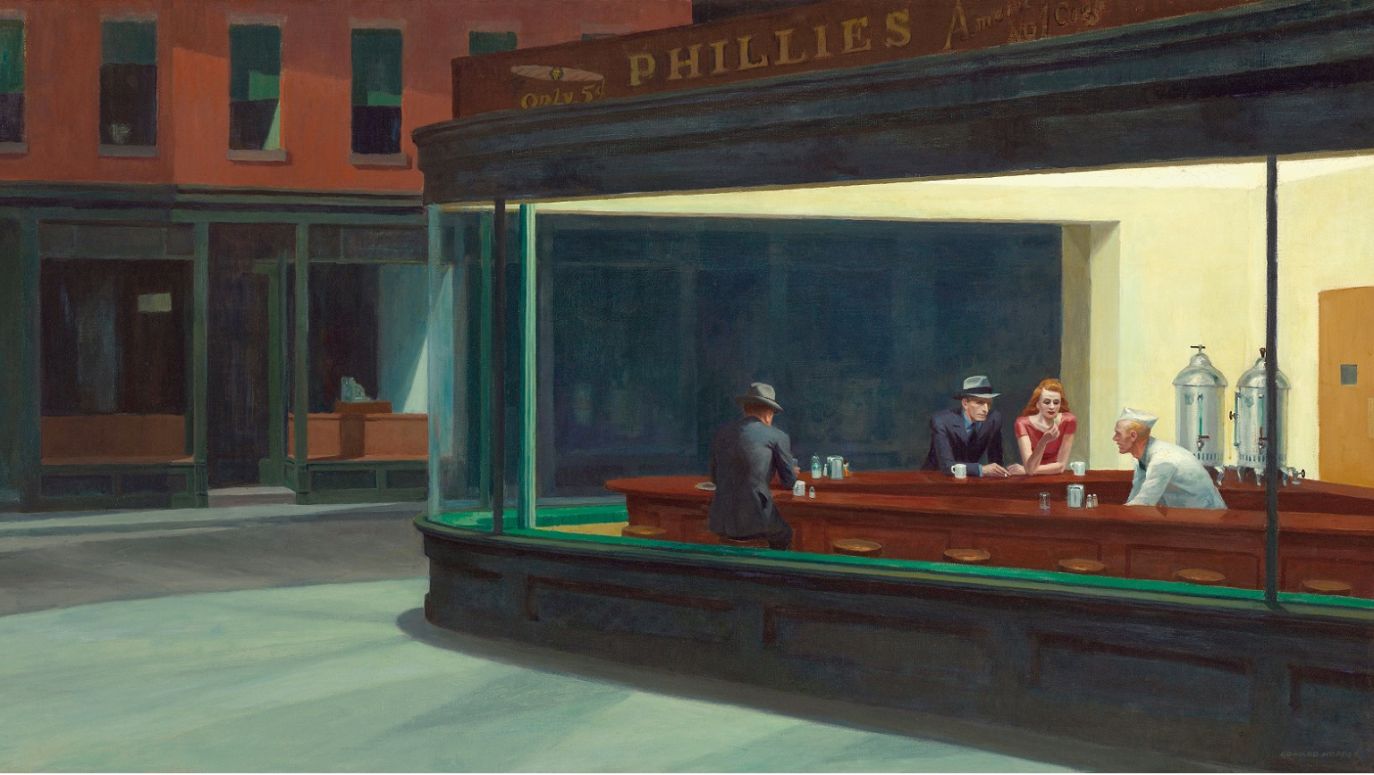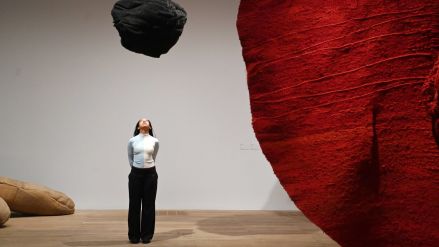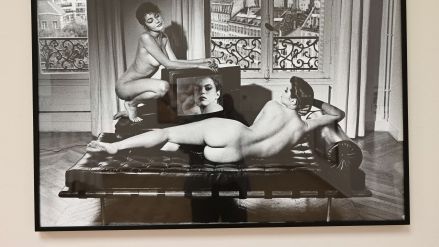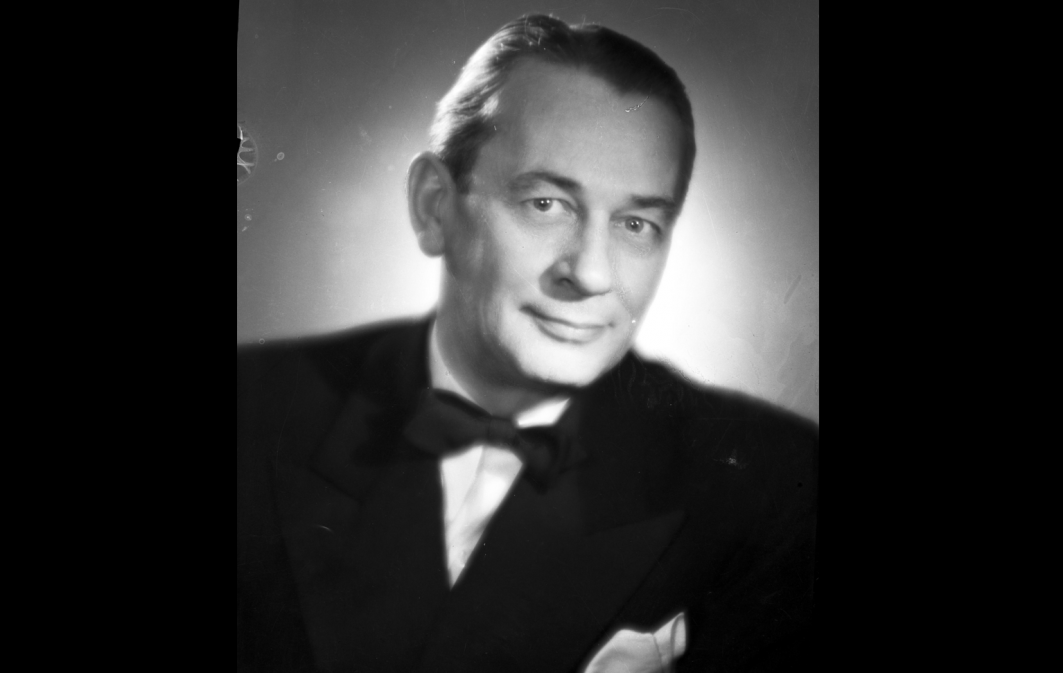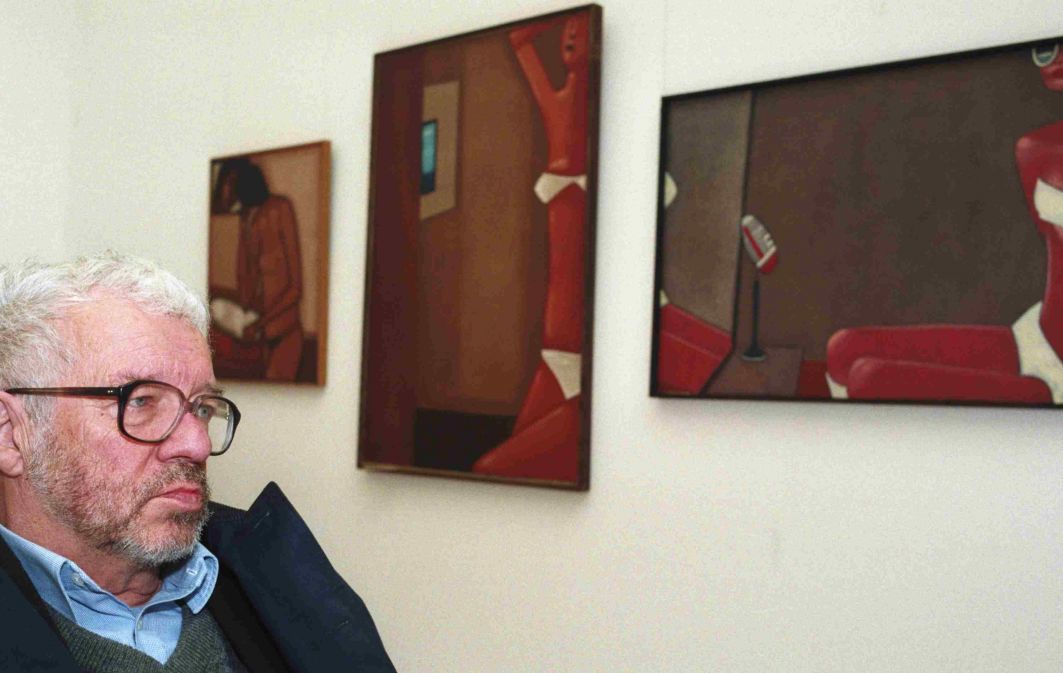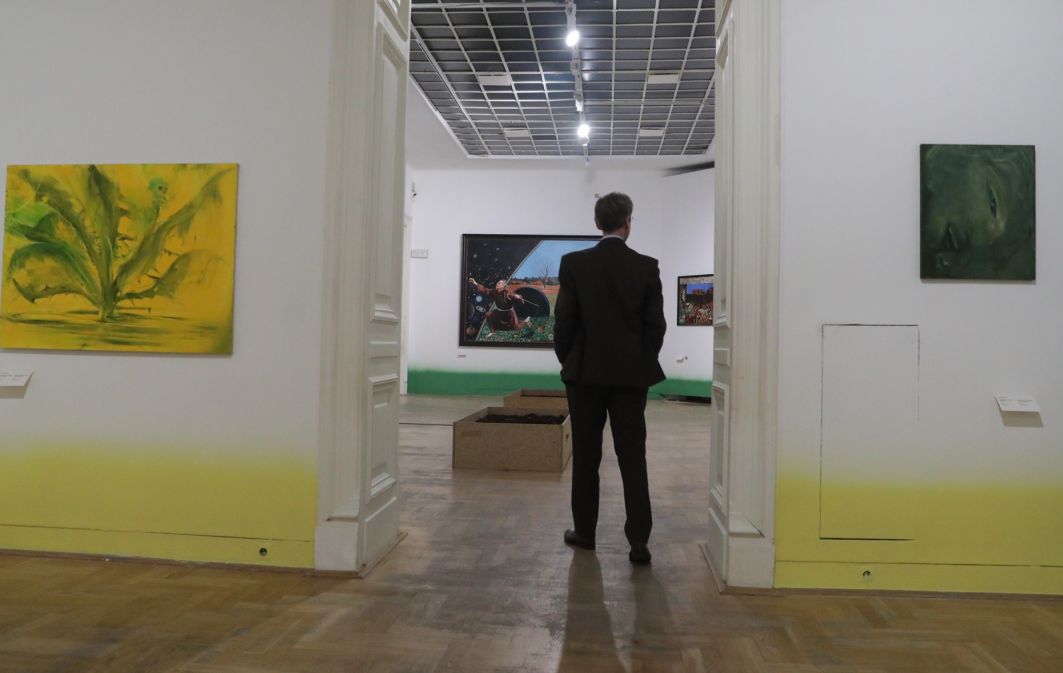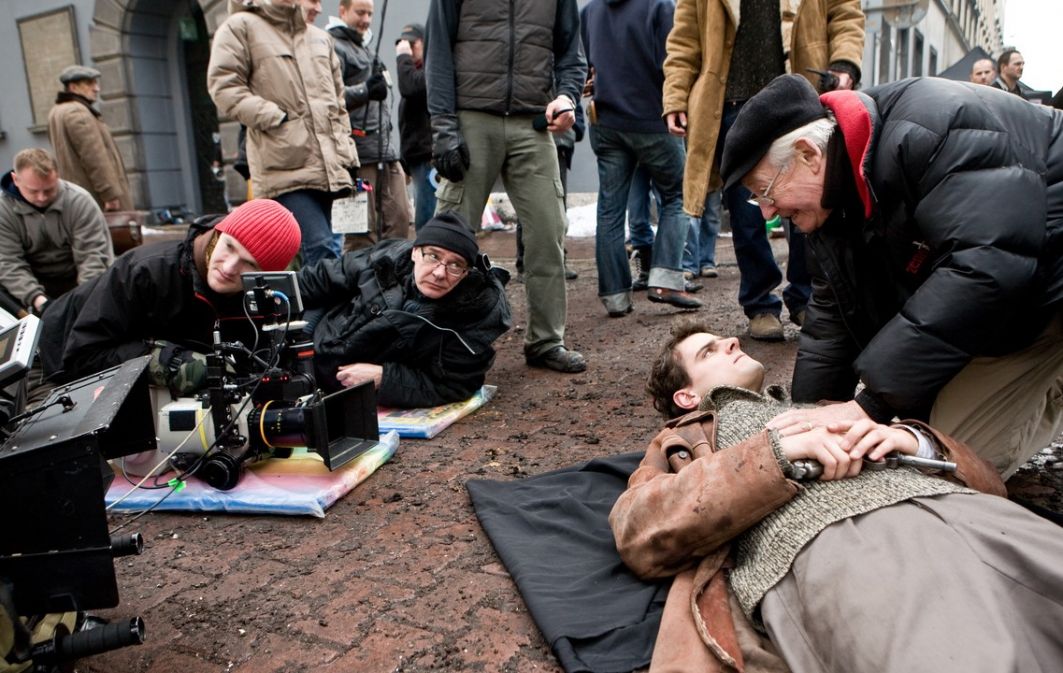I also enjoyed the undisguised fascination with the paintings of Edward Hopper (1882-1967). It was as if the artist, born 61 years later, was showing us: look, nothing has changed. Big-city traffic, crowds, thousands of entertainments do not cure loneliness. Indeed, they even intensify it. Like Hopper, Dylan notes scenes of pub loneliness. The big counters behind which the bartender officiates, serving single customers, silently making thehemselfes 'incommunicado'. A repeat of Hopper's 'Nighthawks' of 1942. As lonely as they are, there seems to be a girl smoking a cigarette somewhere in a basement (this is the title of Dylan's 2020 painting), hiding from human gaze, alone with her thoughts, perhaps aware of the poor prospects for the future. That, at least, can be inferred from the setting in which the maiden finds herself. Just like the depressive lethargy of the women in Hopper's canvases.
Illustrations for the self
I admit to Dylan: he draws well. Meaning, although there is no lightness or maestry in his sketches, he brings out in these small compositions an atmosphere akin to that which characterises his poetry. His figures are clumsy, even coarse, but, after all, these people have neither the time nor the reason to practice elegance. At times, these drawings seemed to me to be too literal, not-quite-diplomatically lacking in finesse. Simply put - illustrations, as if translating metaphors into simple situations.
But perhaps the author had such visions somewhere in the back of his mind, deep in his imagination, when he wrote 'Knocking on Heaven's Door': a guy banging his fists on a locked gate. Anyway, this piece is the most lavishly illustrated by the author - with as many as sixteen drawings (2018). Exposed in a single block, they constitute something of a comic strip for the famous piece.
Not only for this. Drawings 'dictated' by songs abound. Shown next to the handwritten lyrics, à propos of which they were created, they seem to come from the distant past. However, this is not the case at all. The sketches are only a few years old, while the texts are several decades behind. In the retrospective, the old lyricism meets illustration.
I wonder - is this an evocation of an era when people considered the skill of calligraphy a separate art, not so distant from other manual skills? Bob Dylan, born in 1941, certainly remembers those times.
Standing in front of the door
Finally, about the gates. The exhibition begins with them and ends with them. It is not difficult to understand this procedure in the context of Dylan's biography. But what are these doors? Constructed from metal parts of vehicles and other machinery found in car junkyards. The "vintage" raw materials have been welded together, varnished and painted in places. They now form openwork constructions of considerable visual interest. However, for us, brought up in a country where so-called metalwork once flourished, they are associated with poverty and substitute, second-hand materials. I remember these awful works of worn metal, pretending to be something between an ornamental object and a utilitarian one.
The Nobel laureate assembles 'The Double Door' from similar rupees. In his case - an entry into a world he has only recently begun to explore. And he already has success at the start.
– Monika Małkowska
-Translated by Tomasz Krzyżanowski
TVP WEEKLY. Editorial team and jornalists
The "Retrospectrum" exhibition at the Museum of XXI Century Art (MAXXI) in Rome can be seen until 30 April 2023 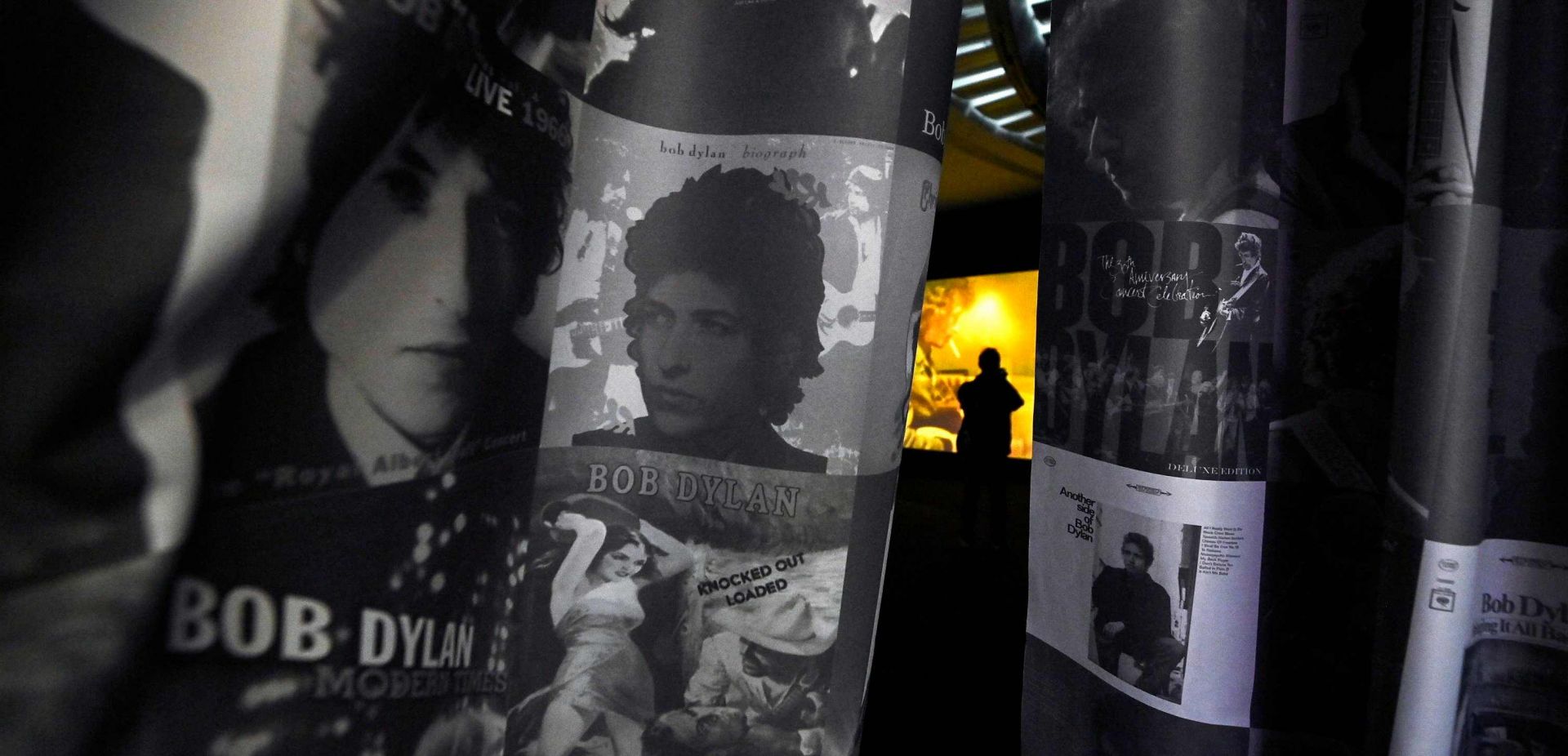
 SIGN UP TO OUR PAGE
SIGN UP TO OUR PAGE
 Perhaps it's for the best - his amateurish paring down of his art in no way threatens his musical legend. And the very signature "Bob Dylan", clearly visible in the lower right-hand corner of the canvases, guarantees their high market position.
Perhaps it's for the best - his amateurish paring down of his art in no way threatens his musical legend. And the very signature "Bob Dylan", clearly visible in the lower right-hand corner of the canvases, guarantees their high market position.